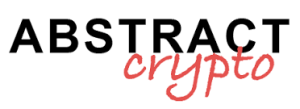The European Securities and Markets Authority (ESMA) has recently clarified that the custody and transfers of stablecoins, such as USDT (Tether), are not restricted by the MiCA regulation. This clarification comes at a crucial time, as Binance has announced the removal of nine stablecoins that do not comply with MiCA, including USDT (Tether), for users in the European Economic Area (EEA). However, Binance will continue to support deposits and withdrawals of these tokens even after March 31st.
The role of ESMA in the MiCA context: enabled custody and transfers of non-compliant stablecoins
ESMA, which supervises compliance with the MiCA regulation in Europe, stated that providing custody and transfer services for non-compliant stablecoins does not violate the new European laws on cryptocurrencies. These services do not constitute a public offering or a request for admission to trading of non-compliant reference tokens or electronic money tokens.
Details on Binance’s decision to delist USDT
On March 3, Binance announced the decision to delist stablecoins not compliant with MiCA. Despite the delisting, the platform will continue to support deposits and withdrawals of these stablecoins until March 31. This approach allows investors to withdraw their positions before the restrictions come into effect.
ESMA Guidelines for CASP
ESMA has emphasized that European crypto-asset service providers (CASP) should prioritize the limitation of services that facilitate the acquisition of non-compliant assets. The agency reiterated that CASP can maintain “sell-only” services until March 31 to allow investors to exit their bull or bear positions.
Confusion and debates on MiCA
The confirmation from ESMA that MiCA does not explicitly limit the custody and transfers of USDT has added further confusion regarding MiCA compliance. Juan Ignacio Ibañez, a member of the technical committee of the MiCA Crypto Alliance, highlighted that the delistings of USDT caused by MiCA have generated numerous debates.
Other sectors of discussion
In addition to the issue of non-compliant stablecoins, other critical sectors of the crypto industry, such as tokenized real assets and cryptocurrency staking, remain unaddressed by the new MiCA regulations. This has raised further questions about the coverage and effectiveness of the regulation.
Conclusion
The clarification from ESMA that the custody and transfers of non-compliant stablecoins are not prohibited under MiCA raises important reflections on the future of crypto regulation in Europe.
While the European authorities continue to monitor market developments, it remains to be seen how these decisions will influence the adoption and regulation of cryptocurrencies on the continent. The central question remains: how will the regulatory framework evolve to meet the continuously evolving needs of the cryptocurrency sector?


